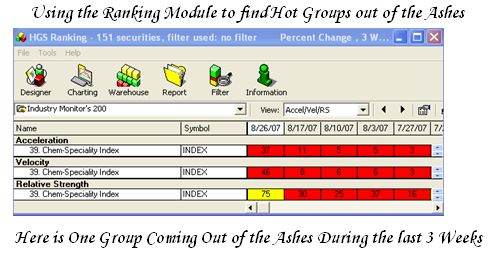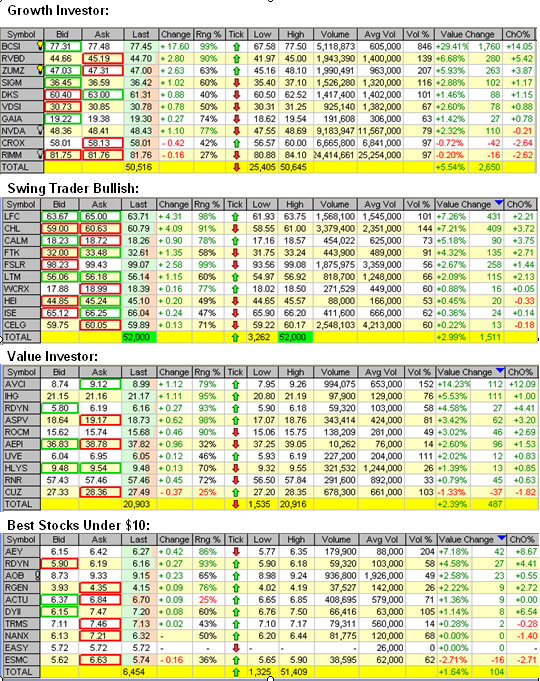HGS Investing Principles – Stakes in the Ground
Saturday, September 1st, 2007
My colleague and good friend, Ron Brown, showed you all the useful tricks of the trade in his Movie today by focusing on Leaders. There are always opportunities as long as you stick to the HGS Investing Principles. His movie says it all and demonstrates how he and you can squeeze the best out of the software to understand the current pulse of what’s working now. So trot over to the HighGrowthStock web-site and enjoy and use his movies as a companion piece to what I have been showing you these past several weeks. http://www.highgrowthstock.com/WeeklyReports/default.asp
One of the basic principles I use is Benchmarking. Benchmarking comes from past history and/or experience. I know the usual hue and cry is “But, Ian, History never repeats itself”. My favorite come back is “But it is worthwhile to know if the Market has ever been there before. Although all ballparks are not the same size, there are minimum requirements for the home run markers but the diamond is ALWAYS the same”. Be that as it may, I have found that Benchmarking and Target Setting are basic approaches I use to determine whether the Market is on the High Road, the Low Road or the Middle Road Scenario.
Another strong principle is to have Stakes in the Ground. How can one measure unless you know where you are measuring from? One of the most important Stakes in the Ground is the Base Low. It is the recent last low after the NASDAQ has had a decent rally and has corrected more than 12%, i.e., more than an Intermediate Correction. All new Bull Market rallies are measured from that Base Low. The NASDAQ Base Low is 2387…lightly tapped in for now until the next bull market rally is confirmed.
At critical times in the market such as around market tops and bottoms, it is essential to have a few mini-stakes in the ground so that one can make assessments as to which way the wind is blowing. We all have our own pet items to watch, including the VIX, the New Highs and New Lows, Accumulation/Distribution, P-E, EPS, and the list goes on. That’s good. But again I ask “What do you measure against and the answer is always “Past History”.
Net-net those are the Standard Building Blocks based on known factors which help to keep us on the right side of the Market. But then what about the new items that are currently in force under present circumstances which are not yet implanted in the history books or for that matter may never be. None-the-less they are useful in real time. They are personal ways of giving you comfort in what you see and re-assurance in what steps you should take. These are the mini-stakes aimed at spying opportunities. Sometimes they turn out to be worthless, and sometimes they are gems. Over time they become your tricks of the trade.
Here are three tricks of the trade which I have shared with you recently:
- Use different Investor Styles from the StockPicker to assess which type may be working now
- Identify Wolf Packs that are stocks in the same Industry Group moving on the same day/week
- Use a basket of about 15 to 20 Stocks that are Leaders when the Market is being trashed
Depending how each and all of them perform subsequently give me clues of the pulse of the market. Net-net, plant a stake in the ground, wait a week or two and take a measurement. I will show you over this long weekend what I got out of each of these and summarize what they collectively tell me at the end…all while watching the golf and trying to cool off. Best Regards, Ian.
 Ian Woodward's Investing Blog
Ian Woodward's Investing Blog





